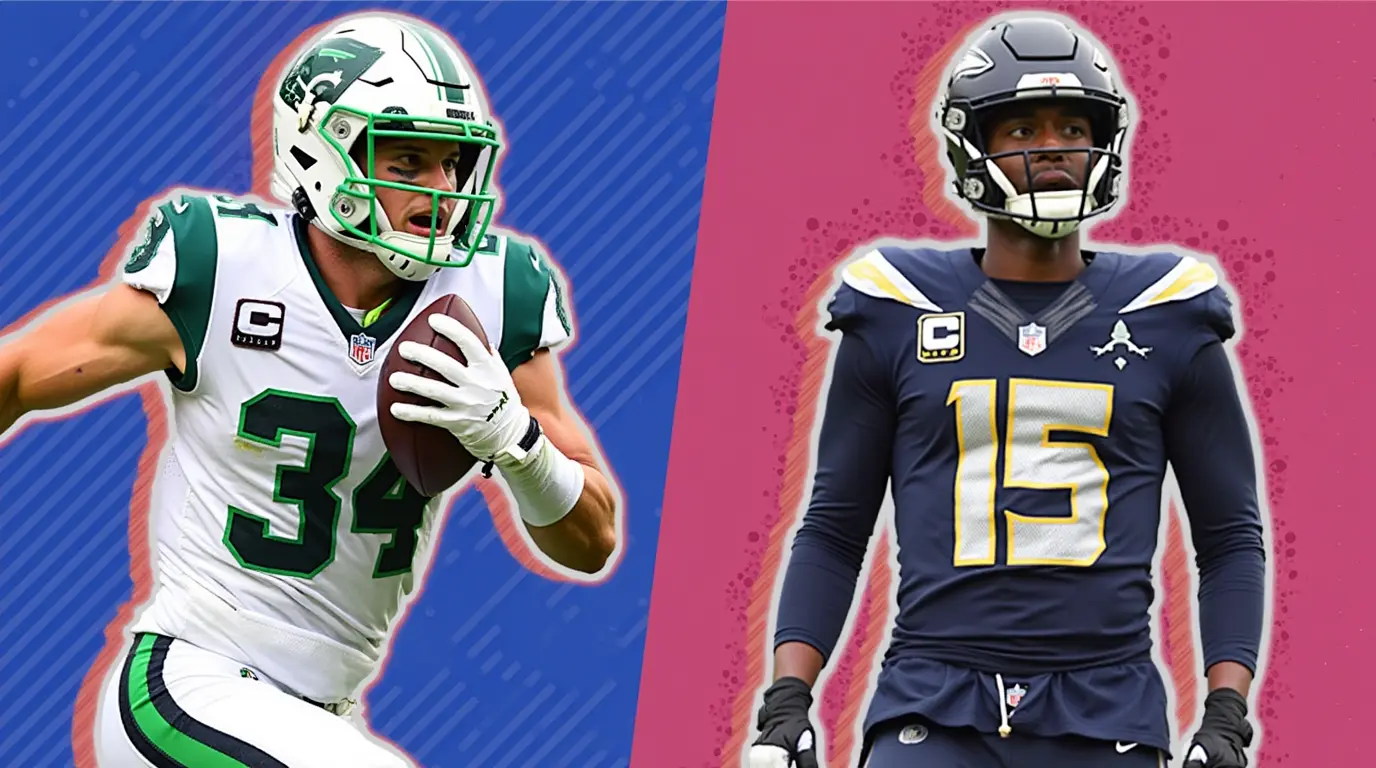Discover the biggest surprises and strongest selections in our comprehensive NFL 2025 mock draft analysis. Expert insights on top prospects and team strategies!
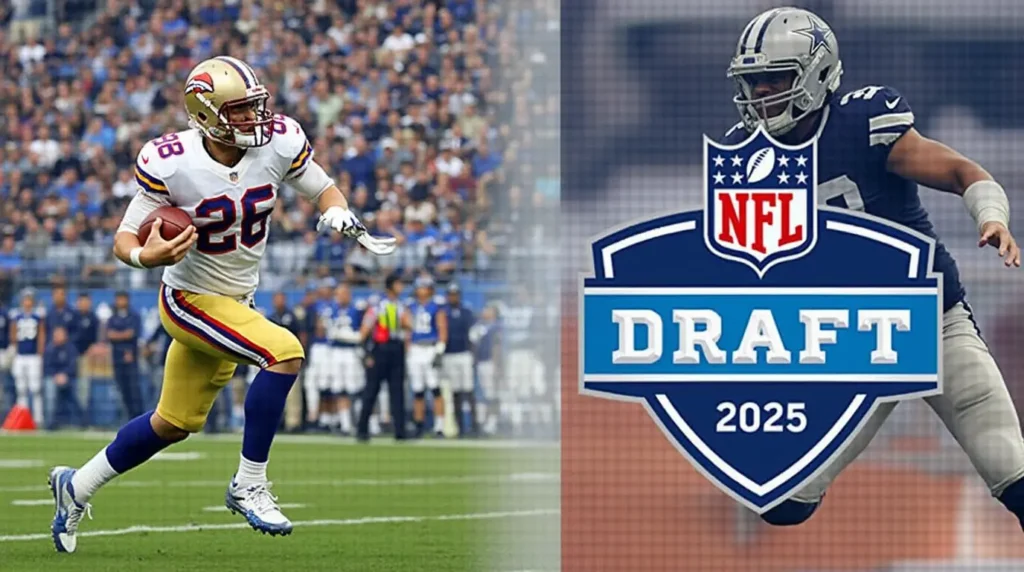
The NFL Draft represents a pivotal moment for franchises across the league, offering hope, potential, and the foundation for future success. As teams prepare for the 2025 NFL Draft, anticipation builds around which collegiate stars will make the leap to professional football and which organizations will make the smartest selections. This comprehensive NFL 2025 mock draft analysis examines both the strongest potential picks that could reshape franchises and the surprising selections that might raise eyebrows among fans and analysts alike. With draft stocks continuously shifting based on college performance, combine results, and team needs, understanding the landscape of available talent becomes increasingly crucial for teams looking to build championship-caliber rosters. Whether you’re a die-hard fan tracking your team’s potential selections or a fantasy football enthusiast preparing for future seasons, this in-depth look at the NFL 2025 mock draft provides valuable insights into the next generation of professional football talent.
The Draft Landscape: Setting the Stage for 2025

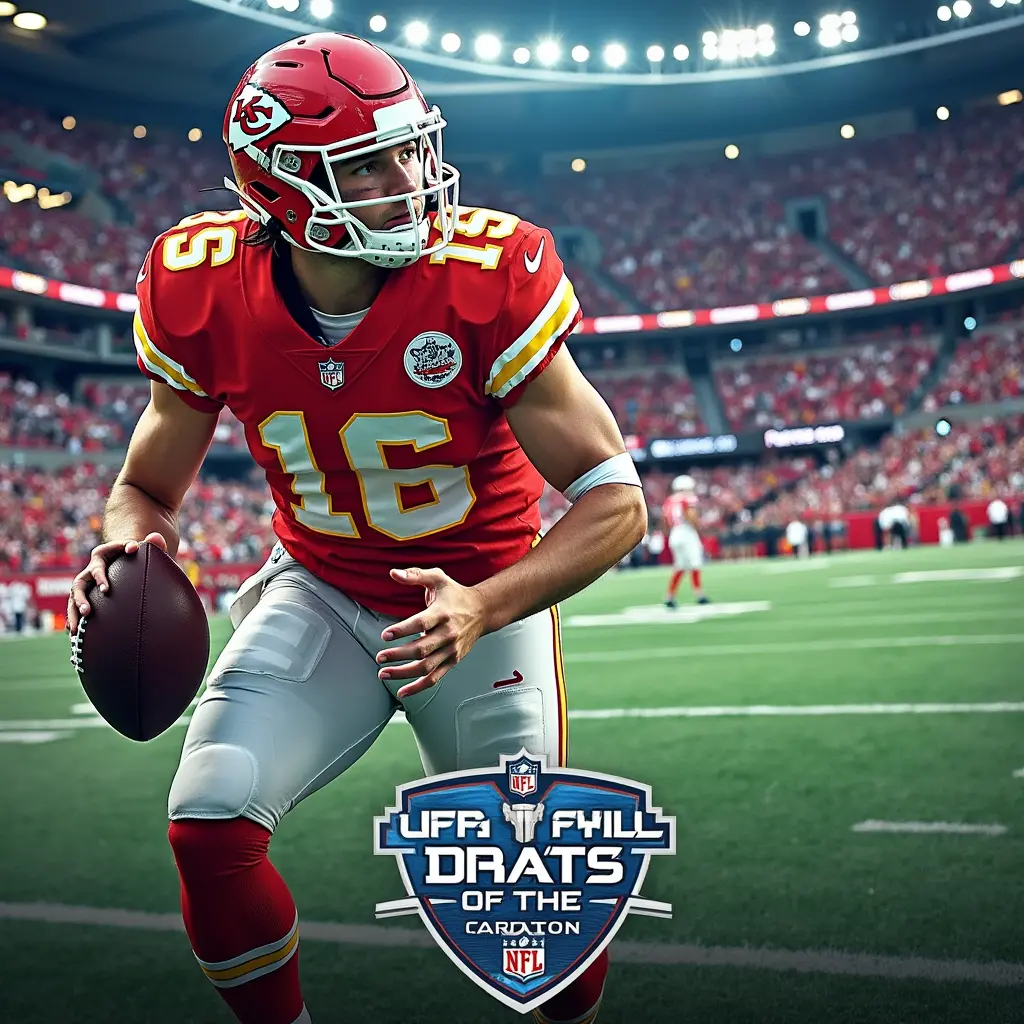
Current NFL Power Dynamics
The NFL landscape heading into the 2025 draft reflects the ever-evolving nature of professional football. Teams that dominated in previous seasons now find themselves rebuilding, while former cellar-dwellers have climbed the ranks through smart drafting and strategic free agent acquisitions. The Kansas City Chiefs continue their dynasty-building efforts behind Patrick Mahomes, though they face increasing pressure from emerging AFC powerhouses. In the NFC, competitive balance has created a conference where any team making the right moves could quickly emerge as a contender.
Draft position remains heavily tied to regular season performance, creating the annual paradox where struggling teams earn premium draft capital while successful franchises must find value later in rounds. This dynamic shapes much of the draft strategy, with teams at the top of the order often choosing between selecting a potential franchise cornerstone or trading down to accumulate additional picks.
subscriptions from KangarooIPTV
Get secure subscriptions from KangarooIPTV: Monthly, 3-months, Yearly, with exceptional customer support to ensure your complete satisfaction!


• Kangaroo-Monthly BUY NOW 10 USD
• Kangaroo-3Months BUY NOW 25 USD
• Kangaroo-Yearly BUY NOW 90 USD
College Football Talent Pipeline
The 2024-2025 college football season has showcased exceptional talent across all positions, particularly at quarterback, offensive tackle, and edge rusher. Top programs like Alabama, Ohio State, Georgia, and new emerging powerhouses have continued to develop NFL-ready prospects, while smaller schools have produced notable sleeper candidates who have risen up draft boards.
Several trends have emerged in this draft class:
- Unprecedented depth at the offensive tackle position
- A strong quarterback class featuring diverse playing styles
- Versatile defensive backs who can play multiple positions
- Athletic tight ends who create matchup problems in the passing game
- Interior defensive linemen with exceptional pass-rushing ability
This wealth of talent creates interesting dilemmas for teams selecting in the NFL 2025 mock draft, as positional value must be weighed against best player available philosophies.
Draft Evaluation Methodology
To create this mock draft analysis, we’ve incorporated multiple evaluation factors:
- College production and statistical performance
- Athletic testing results and physical measurements
- Scheme fit with potential teams
- Positional value in the modern NFL
- Team needs and roster construction
- Historical drafting patterns of current front offices
- Pre-draft visits and reported team interest
While no mock draft can perfectly predict the actual selections, this methodology provides a framework for understanding which prospects represent the strongest potential picks and which selections might be considered surprising or reaches.
Top 10 Picks: Franchise-Altering Selections
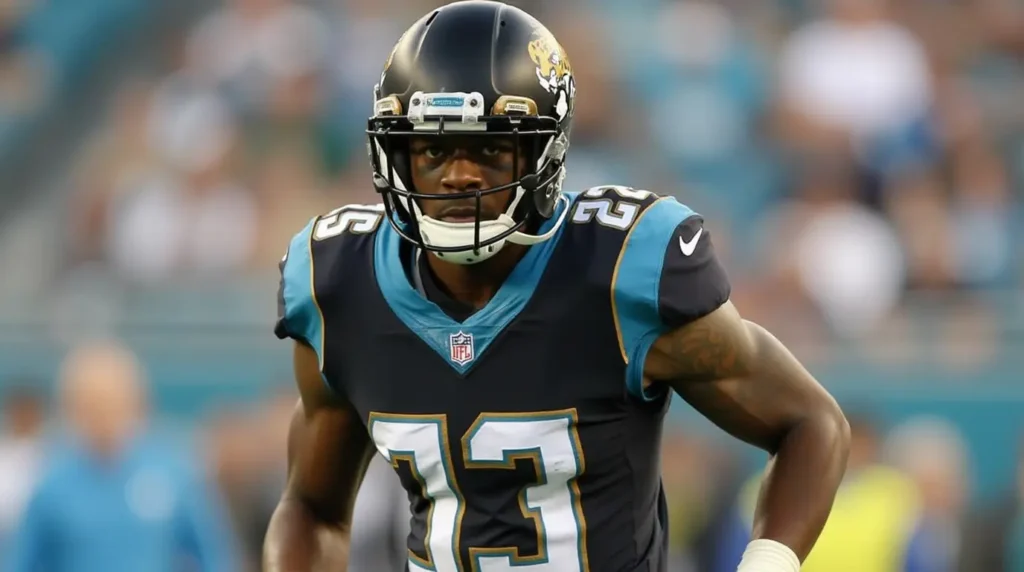
Pick 1: Jacksonville Jaguars – Caleb Williams, QB, USC
The Jaguars find themselves in the unfortunate position of picking first overall again, signaling another failed experiment at quarterback. Despite investing heavily in Trevor Lawrence, the organization has decided to move in a new direction after consecutive disappointing seasons.
Caleb Williams represents everything teams seek in a modern franchise quarterback. With exceptional arm talent, improvisational ability, and leadership qualities, Williams has drawn comparisons to Patrick Mahomes for his off-platform throwing capability and dynamic playmaking. His production at USC remained elite despite supporting cast limitations, demonstrating his ability to elevate those around him.
Strength Analysis: This selection rates as one of the strongest in the draft. Williams has the physical tools, mental processing, and intangibles to transform the Jaguars’ fortunes immediately. His ability to operate both within structure and create outside the pocket makes him scheme-versatile for whatever offensive system Jacksonville implements.
Pick 2: Arizona Cardinals – Mykel Williams, EDGE, Georgia
The Cardinals continue their defensive rebuild by selecting Georgia’s dominant edge rusher Mykel Williams. After leading the SEC in sacks and pressures, Williams combines elite athleticism with technical refinement rarely seen in collegiate pass rushers.
At 6’5″ and 265 pounds with exceptional length and bend, Williams fits the prototype for modern edge defenders who can rush the passer and set a strong edge against the run. His versatility to align at multiple positions along the defensive front provides valuable flexibility for Arizona’s defensive scheme.
Strength Analysis: This selection addresses the Cardinals’ most significant defensive need while securing one of the draft’s true blue-chip prospects. Williams’ combination of production, physical traits, and technical development gives him one of the highest floors and ceilings in the entire class.
Pick 3: New England Patriots – Carson Beck, QB, Georgia
With a new coaching regime in place, the Patriots secure their quarterback of the future in Georgia’s Carson Beck. After leading the Bulldogs to another championship-caliber season, Beck has established himself as a pro-ready prospect with the mental processing and accuracy to succeed at the next level.
Beck’s strengths lie in his exceptional pocket presence, anticipatory throwing, and ability to progress through reads efficiently. While not possessing the athletic ceiling of some quarterback prospects, his processing speed and decision-making compensate for limited mobility.
Strength Analysis: This represents a strong selection for New England, addressing their quarterback need with a prospect whose skillset aligns with their offensive philosophy. Beck’s experience in a pro-style system at Georgia should ease his transition to the NFL level.
Pick 4: Las Vegas Raiders – Tetairoa McMillan, WR, Arizona
The Raiders secure the draft’s premier offensive weapon in Arizona’s Tetairoa McMillan, giving their young quarterback the true alpha receiver the offense has lacked. At 6’5″ with exceptional body control and contested catch ability, McMillan dominated the Pac-12 with over 1,400 receiving yards and 14 touchdowns in his final collegiate season.
McMillan’s rare combination of size, route-running precision, and after-catch ability makes him a three-level threat in the passing game. His basketball background manifests in his rebounding-like skills on contested throws, while his acceleration allows him to create separation despite his larger frame.
Strength Analysis: This selection represents excellent value for the Raiders, securing a potential game-changing receiver with legitimate All-Pro upside. McMillan addresses their biggest offensive need while providing scheme versatility as a boundary or slot target.
Pick 5: Chicago Bears – JT Tuimoloau, EDGE, Ohio State
The Bears continue building their defensive front by selecting Ohio State’s dominant edge defender JT Tuimoloau. After returning for his senior season and posting double-digit sacks, Tuimoloau combines exceptional power, technique, and motor to consistently disrupt opposing offenses.
At 6’4″ and 270 pounds, Tuimoloau offers scheme versatility as a traditional 4-3 defensive end or standing rush linebacker. His ability to convert speed to power makes him particularly effective against stronger NFL tackles, while his hand usage reflects advanced technical development.
Strength Analysis: Chicago secures a cornerstone defensive player who perfectly complements their recent interior defensive line investments. Tuimoloau’s high floor makes him one of the safer selections in the draft, while his production against top competition suggests immediate NFL impact.
Pick 6: Carolina Panthers – Will Johnson, CB, Michigan
The Panthers address their secondary needs by selecting Michigan’s standout cornerback Will Johnson. With exceptional ball skills (6 interceptions in his final collegiate season) and elite athletic testing, Johnson offers the complete package at a premium defensive position.
Johnson’s combination of size (6’2″, 200 pounds), speed (projected 4.38 forty), and technique makes him capable of matching up with any type of NFL receiver. His experience in Michigan’s diverse defensive scheme has prepared him for various coverage responsibilities at the professional level.
Strength Analysis: Carolina secures the draft’s top defensive back, addressing a significant need while selecting the best player available. Johnson’s proven production against top competition and scheme versatility make this one of the draft’s strongest selections.
Pick 7: Tennessee Titans – Ashton Jeanty, RB, Boise State
In the draft’s first genuine surprise, Tennessee selects Boise State running back Ashton Jeanty. After leading the nation with over 2,000 rushing yards and 23 touchdowns, Jeanty emerged as a dynamic three-down back with exceptional vision, contact balance, and receiving ability.
At 5’11” and 220 pounds, Jeanty combines power with surprising elusiveness, consistently forcing missed tackles at an elite rate. His development as a pass protector during his collegiate career addresses previous concerns about third-down viability.
Weakness Analysis: While Jeanty’s talent is undeniable, selecting a running back this high represents questionable value in the modern NFL. With significant needs at premium positions, Tennessee’s selection defies contemporary draft strategy that typically values running backs in later rounds.
Pick 8: Washington Commanders – James Pearce Jr., EDGE, Tennessee
Washington continues its defensive rebuild by selecting Tennessee edge rusher James Pearce Jr. After leading the SEC with 13 sacks as a junior, Pearce combines exceptional first-step quickness with refined hand technique and leverage.
At 6’5″ and 250 pounds, Pearce offers the ideal frame for a speed rusher with room to add functional strength. His ability to bend the edge while maintaining speed separates him from other pass rushers in this class, creating a skillset particularly valuable in today’s pass-heavy NFL.
Strength Analysis: This selection addresses Washington’s need for increased pass rush productivity while securing one of the draft’s most naturally gifted edge defenders. Pearce’s specialized skill set meets the premium placed on pressuring opposing quarterbacks.
Pick 9: New York Giants – Luther Burden III, WR, Missouri
The Giants add explosive playmaking ability to their offense by selecting Missouri wide receiver Luther Burden III. After accumulating over 1,200 receiving yards and showcasing versatility as both a deep threat and yards-after-catch specialist, Burden offers the dynamic offensive weapon New York has lacked.
Despite modest size (5’11”, 200 pounds), Burden’s exceptional route-running, acceleration, and contested catch ability make him a complete receiver capable of aligning inside or outside. His experience as a return specialist adds additional value to his overall profile.
Strength Analysis: New York addresses their most significant offensive need while securing a receiver with legitimate WR1 potential. Burden’s diverse skill set provides flexibility for offensive scheming and potential to elevate their passing attack immediately.
Pick 10: Los Angeles Chargers – Kelvin Banks Jr., OT, Texas
The Chargers continue investing in offensive line protection by selecting Texas offensive tackle Kelvin Banks Jr. After anchoring the Longhorns’ line for three seasons without allowing a sack in his final year, Banks combines exceptional technical refinement with ideal physical tools.
At 6’4″ and 320 pounds with 34″ arms, Banks possesses the length, power, and foot quickness to handle NFL edge rushers. His experience at both tackle spots provides valuable versatility, while his meanstreak in the run game addresses previous questions about play strength.
Strength Analysis: Los Angeles secures a potential franchise cornerstone at left tackle, addressing their priority of providing elite protection for their quarterback investment. Banks’ combination of collegiate production and athletic testing makes him one of the draft’s safest selections.
Mid-First Round Selections (11-20)
Pick 11: Miami Dolphins – Travis Hunter, WR/CB, Colorado
In one of the draft’s most intriguing selections, Miami selects two-way star Travis Hunter. After becoming the first player since the 1960s to earn All-American honors on both offense and defense, Hunter’s unprecedented versatility creates fascinating possibilities for the Dolphins.
While most teams projected Hunter exclusively as either a receiver or cornerback, Miami plans to utilize his unique skill set in specialized packages on both sides of the ball. His exceptional ball skills, route understanding, and athleticism translate to either position, creating matchup advantages few teams can counter.
Strength Analysis: This represents one of the draft’s most innovative selections, securing a truly unique talent who could transform how teams utilize two-way players. Hunter’s versatility provides exceptional value even if he ultimately focuses on one position.
Pick 12: Indianapolis Colts – Will Campbell, OT, LSU
The Colts address their offensive line needs by selecting LSU offensive tackle Will Campbell. After starting 38 consecutive games in the SEC, Campbell combines exceptional experience with ideal physical tools for a franchise left tackle.
At 6’6″ and 315 pounds with outstanding movement skills, Campbell has demonstrated the ability to handle speed rushers while maintaining the power to anchor against bull rushes. His experience in LSU’s diverse offensive schemes has prepared him for various blocking assignments.
Strength Analysis: Indianapolis secures a cornerstone offensive lineman who can protect their quarterback investment for the next decade. Campbell’s combination of collegiate production against elite competition and athletic upside makes this selection one of the draft’s strongest values.
Pick 13: Denver Broncos – Malaki Starks, S, Georgia
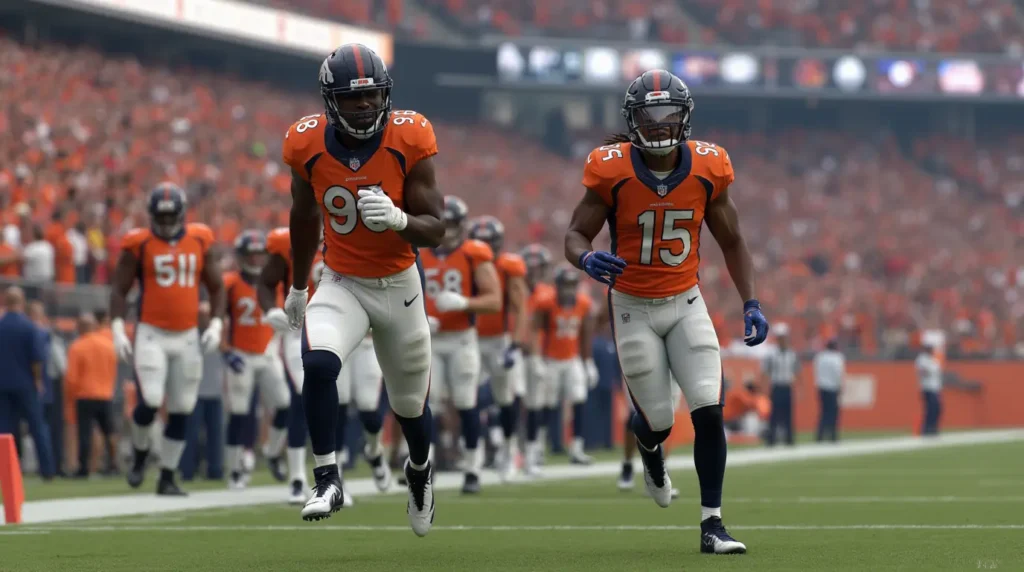
Denver bolsters its secondary by selecting Georgia safety Malaki Starks. After earning unanimous All-American honors, Starks brings exceptional versatility, range, and playmaking ability to the Broncos’ defensive backfield.
At 6’1″ and 205 pounds with rare movement skills for his size, Starks can align as a deep safety, box defender, or slot coverage specialist. His ball production (5 interceptions, 12 passes defended in his final season) and tackling reliability (missed tackle rate under 5%) make him a complete defensive prospect.
Strength Analysis: The Broncos secure one of the draft’s safest defensive prospects while addressing a significant need in their secondary. Starks’ scheme versatility and proven production against elite competition suggest immediate impact potential.
Pick 14: Pittsburgh Steelers – Donovan Jackson, OG, Ohio State
Pittsburgh continues rebuilding its offensive line by selecting Ohio State guard Donovan Jackson. After earning All-American honors and surrendering zero sacks in his final collegiate season, Jackson combines exceptional power with surprising movement skills in space.
At 6’4″ and 315 pounds with outstanding technical refinement, Jackson offers day-one starting ability at either guard position. His experience in Ohio State’s diverse run schemes and pass protection systems has prepared him for immediate NFL contribution.
Strength Analysis: This selection addresses Pittsburgh’s interior offensive line needs while securing one of the draft’s highest-floor prospects. Jackson’s combination of physical tools and technical development makes him one of the safest selections in this range.
Pick 15: Detroit Lions – Mason Graham, DT, Michigan
The Lions strengthen their defensive front by selecting Michigan defensive tackle Mason Graham. After dominating the Big Ten with 8.5 sacks and 14 tackles for loss from an interior position, Graham brings exceptional disruption ability to Detroit’s defense.
At 6’3″ and 318 pounds with surprising quickness, Graham combines power at the point of attack with the ability to penetrate and disrupt backfields. His versatility to align at multiple techniques along the defensive front provides valuable scheme flexibility.
Strength Analysis: Detroit addresses a key defensive need while selecting a prospect from their backyard who fits their cultural identity. Graham’s production against top competition and technical refinement make him ready for immediate contribution.
Pick 16: Seattle Seahawks – Kenneth Talley, EDGE, Penn State
Seattle adds pass rush capability by selecting Penn State edge defender Kenneth Talley. After a breakout season with 11 sacks and 47 pressures, Talley combines exceptional first-step explosiveness with developing power moves.
At 6’3″ and 250 pounds with outstanding athleticism, Talley offers the bend and flexibility to turn tight corners while pursuing quarterbacks. His continued technical development during his collegiate career suggests significant untapped potential.
Weakness Analysis: While Talley’s athletic upside is undeniable, this selection represents a reach based on production and technical refinement. With only one truly dominant season and ongoing development needs in his run defense, Seattle could have found similar value later or addressed more pressing needs.
Pick 17: Houston Texans – Harold Perkins, LB, LSU
Houston strengthens its linebacker corps by selecting LSU’s Harold Perkins. After showcasing exceptional versatility as both a coverage linebacker and pass rusher, Perkins brings three-down capability to the Texans’ defense.
At 6’2″ and 235 pounds with sideline-to-sideline range, Perkins combines the athleticism to match running backs and tight ends in coverage with the blitzing ability to pressure quarterbacks. His experience in multiple defensive alignments provides valuable scheme flexibility.
Strength Analysis: The Texans secure a modern NFL linebacker capable of remaining on the field in all situations. Perkins’ diverse skill set addresses Houston’s coverage limitations at the second level of their defense.
Pick 18: Green Bay Packers – Benjamin Morrison, CB, Notre Dame
Green Bay addresses its secondary needs by selecting Notre Dame cornerback Benjamin Morrison. After leading the nation with 7 interceptions and allowing a completion percentage below 40% when targeted, Morrison combines exceptional ball skills with technical refinement.
At 6’0″ and 190 pounds, Morrison brings the ideal combination of size, fluidity, and competitiveness to handle boundary cornerback responsibilities. His experience in both man and zone coverages provides valuable scheme versatility for Green Bay’s defensive system.
Strength Analysis: The Packers address a key defensive need while selecting a prospect whose ball production and technical development suggest high-floor potential. Morrison’s proven ability against top competition makes him one of the safer defensive back selections.
Pick 19: Philadelphia Eagles – Abdul Carter, LB, Penn State
Philadelphia strengthens its linebacker corps by selecting Penn State’s Abdul Carter. After transitioning from edge rusher to off-ball linebacker with remarkable success, Carter brings exceptional athleticism and versatility to the Eagles’ defense.
At 6’3″ and 245 pounds with rare movement skills, Carter has demonstrated the ability to rush the passer (7 sacks), drop into coverage (3 interceptions), and pursue ball carriers sideline-to-sideline. His diverse skill set allows defensive coordinators to deploy him in multiple roles.
Strength Analysis: The Eagles address their persistent linebacker needs with a prospect whose versatility matches modern defensive requirements. Carter’s combination of size, athleticism, and developing instincts provides exceptional value at this draft position.
Pick 20: Cincinnati Bengals – Damien Martinez, RB, Oregon State
Cincinnati addresses its backfield by selecting Oregon State running back Damien Martinez. After accumulating over 1,500 rushing yards with exceptional efficiency, Martinez brings the complete skill set of a three-down NFL back.
At 5’11” and 235 pounds, Martinez combines exceptional contact balance and power with surprising elusiveness in the open field. His development as a receiver (35 receptions in his final season) addresses previous questions about his third-down viability.
Weakness Analysis: While Martinez’s talent is undeniable, this selection represents questionable positional value in the first round. With significant needs along the offensive line and secondary, Cincinnati’s pick contradicts modern draft strategy that typically values running backs in later rounds.
Late First Round Selections (21-32)
Pick 21: Cleveland Browns – Cameron Williams, OT, Texas
Cleveland addresses its offensive line needs by selecting Texas offensive tackle Cameron Williams. After allowing just one sack across 675 pass-blocking snaps in his final collegiate season, Williams combines exceptional size with surprising technical refinement.
At 6’7″ and 330 pounds with 36″ arms, Williams possesses rare physical dimensions even by NFL standards. His improvement in pass protection technique throughout his collegiate career suggests continued development potential at the professional level.
Strength Analysis: The Browns secure a developmental tackle with exceptional physical traits, addressing their aging offensive line. Williams’ combination of size and athletic upside provides good value at this draft position.
Pick 22: Buffalo Bills – Xavier Worthy, WR, Texas
Buffalo adds explosive playmaking ability by selecting Texas wide receiver Xavier Worthy. After setting the NFL Combine record with a 4.21 forty-yard dash and producing consistently at Texas, Worthy brings elite deep-threat capability to the Bills’ offense.
At 5’11” and 172 pounds, Worthy’s elite speed forces defenses to account for vertical threats on every snap. His development as a route runner during his collegiate career has addressed previous concerns about one-dimensionality in his game.
Strength Analysis: The Bills address their need for explosive playmaking in the passing game while securing one of the draft’s most dynamic athletes. Worthy’s elite speed element perfectly complements Buffalo’s existing offensive weapons.
Pick 23: Los Angeles Rams – Corey Collier, S, Florida
The Rams strengthen their secondary by selecting Florida safety Corey Collier. After emerging as one of the SEC’s premier defensive backs with 5 interceptions and 14 passes defended, Collier brings exceptional range and ball skills to Los Angeles’ defense.
At 6’2″ and 200 pounds with outstanding movement skills, Collier possesses the ideal physical profile for a modern NFL safety. His experience playing multiple positions in Florida’s defensive scheme provides valuable versatility for a Rams secondary needing reinforcement.
Weakness Analysis: While Collier’s physical traits are impressive, his inconsistent tackling (missed tackle rate over 15%) and occasional lapses in run support make this selection somewhat questionable. With more proven safety prospects still available, the Rams’ pick appears driven more by athletic upside than consistent production.
Pick 24: Baltimore Ravens – Jaheim Bell, TE, Florida State
Baltimore adds to its tight end room by selecting Florida State’s Jaheim Bell. After showcasing exceptional versatility as both an inline tight end and move piece, Bell brings diverse offensive capabilities to the Ravens’ system.
At 6’3″ and 240 pounds with outstanding athleticism, Bell combines the receiving ability of a wide receiver with developing blocking skills. His experience aligning at multiple positions (inline, slot, backfield) creates matchup advantages and scheme flexibility.
Strength Analysis: The Ravens secure a versatile offensive weapon who fits their tight end-centric offensive philosophy. Bell’s diverse skill set provides excellent value at this draft position while addressing team needs for additional pass-catching options.
Pick 25: Dallas Cowboys – Emeka Egbuka, WR, Ohio State
Dallas strengthens its receiving corps by selecting Ohio State’s Emeka Egbuka. After producing back-to-back 1,000-yard seasons in a loaded Buckeyes offense, Egbuka brings polished route-running and reliable hands to the Cowboys’ passing attack.
At 6’1″ and 205 pounds with excellent body control, Egbuka combines good size with technical refinement rarely seen in collegiate receivers. His experience operating both from the slot and boundary positions provides valuable versatility for offensive scheming.
Strength Analysis: The Cowboys address receiver needs with one of the draft’s most pro-ready prospects at the position. Egbuka’s polished game and production against top competition suggest immediate contribution potential.
Pick 26: Atlanta Falcons – Walter Nolen, DT, Texas A&M
Atlanta bolsters its defensive front by selecting Texas A&M defensive tackle Walter Nolen. After dominating SEC interior offensive linemen with 7.5 sacks and consistent pressure, Nolen brings exceptional disruption ability to the Falcons’ defense.
At 6’4″ and 295 pounds with rare quickness for his size, Nolen combines the power to anchor against double teams with the burst to penetrate and disrupt backfields. His improved consistency during his collegiate career addresses previous questions about down-to-down effort.
Strength Analysis: The Falcons address a significant defensive need while securing a prospect with first-half-of-the-first-round talent who slipped due to positional value considerations. Nolen’s combination of physical traits and production represent excellent value at this draft position.
Pick 27: New York Jets – Landon Jackson, EDGE, Arkansas
The Jets strengthen their pass rush by selecting Arkansas edge defender Landon Jackson. After leading the SEC with 13.5 sacks and 22 tackles for loss, Jackson combines exceptional length with developing technical refinement.
At 6’7″ and 275 pounds with 35″ arms, Jackson possesses rare physical dimensions even by NFL standards. His improvement in countering offensive tackle adjustments throughout his collegiate career suggests significant development potential.
Weakness Analysis: While Jackson’s physical traits are impressive, his relative stiffness and inconsistent pad level make this selection somewhat questionable. With more refined edge defenders still available, the Jets’ pick appears driven more by physical measurements than consistent technical execution.
Pick 28: Tampa Bay Buccaneers – Jeremiah Smith, WR, Ohio State
Tampa Bay adds receiving talent by selecting Ohio State’s Jeremiah Smith. After earning Freshman All-American honors with over 900 yards and 8 touchdowns, Smith brings exceptional physical tools and production to the Buccaneers’ offense.
At 6’3″ and 215 pounds with outstanding body control, Smith combines ideal size with natural receiving instincts. His immediate production as a true freshman against top competition suggests rare developmental readiness.
Strength Analysis: The Buccaneers secure one of the draft’s highest-upside receivers who slipped due to limited collegiate experience. Smith’s combination of physical tools and early production represents excellent value at this draft position.
Pick 29: Kansas City Chiefs – Tacario Davis, CB, Arizona
Kansas City strengthens its secondary by selecting Arizona cornerback Tacario Davis. After allowing the lowest completion percentage in the Pac-12 (31.7%) when targeted, Davis brings exceptional coverage ability to the Chiefs’ defense.
At 6’4″ and 190 pounds with rare length for the position, Davis possesses the physical tools to match up with larger NFL receivers. His improvement in run support and tackling during his collegiate career addresses previous concerns about physicality.
Strength Analysis: The Chiefs address secondary needs with a prospect whose physical dimensions and coverage ability provide unique matchup advantages. Davis’ combination of size and technical development represents good value at this draft position.
Pick 30: San Francisco 49ers – Jordan Hancock, CB, Ohio State
San Francisco bolsters its secondary by selecting Ohio State cornerback Jordan Hancock. After earning All-Big Ten honors with 4 interceptions and 15 passes defended, Hancock brings versatile coverage skills to the 49ers’ defense.
At 6’1″ and 195 pounds with fluid movement skills, Hancock possesses the ideal physical profile for a modern NFL cornerback. His experience in both man and zone coverages provides valuable scheme versatility for San Francisco’s defensive system.
Strength Analysis: The 49ers address secondary needs with a technically refined prospect who fits their defensive philosophy. Hancock’s production against top competition and scheme versatility represent good value at this draft position.
Pick 31: Minnesota Vikings – Carson Steele, RB, UCLA
Minnesota addresses its backfield by selecting UCLA running back Carson Steele. After transferring from Ball State and producing over 1,300 rushing yards with exceptional efficiency, Steele brings a powerful north-south running style to the Vikings’ offense.
At 6’0″ and 235 pounds, Steele combines exceptional power and contact balance with surprising burst through the hole. His development as a receiver (28 receptions) and pass protector during his final collegiate season addresses previous questions about three-down viability.
Weakness Analysis: While Steele’s production is impressive, selecting a running back in the first round represents questionable positional value in the modern NFL. With significant needs along the offensive and defensive lines, Minnesota’s selection contradicts contemporary draft strategy that typically values running backs in later rounds.
Pick 32: New Orleans Saints – Nic Scourton, EDGE, Purdue
New Orleans strengthens its pass rush by selecting Purdue edge defender Nic Scourton. After leading the Big Ten with 12 sacks and 17 tackles for loss, Scourton brings exceptional power and technical refinement to the Saints’ defense.
At 6’4″ and 280 pounds, Scourton combines the power to set a strong edge against the run with developing pass rush moves. His consistent production against double teams and chip blocks suggests translatable skills to the NFL level.
Strength Analysis: The Saints address edge defender needs with a prospect whose production and physical development represent good value at the end of the first round. Scourton’s combination of power and technical refinement suggests immediate rotational potential with starter upside.
Strongest Draft Picks Analysis
Best Value Selections
Several selections stand out as exceptional value based on talent level relative to draft position:
- Walter Nolen, DT, Texas A&M (Pick 26, Atlanta) – A top-15 talent who slipped due to positional value considerations. Nolen’s combination of disruption ability and run defense provides elite interior defensive line potential at tremendous value.
- Jeremiah Smith, WR, Ohio State (Pick 28, Tampa Bay) – Despite limited collegiate experience, Smith’s rare physical tools and immediate production against top competition suggest a receiver with legitimate WR1 potential available near the end of the first round.
- Will Campbell, OT, LSU (Pick 12, Indianapolis) – A prospect with top-10 talent who slipped slightly due to a deep offensive tackle class. Campbell’s combination of collegiate production and athletic upside makes him a potential franchise cornerstone at a premium position.
- Travis Hunter, WR/CB, Colorado (Pick 11, Miami) – A truly unique prospect whose two-way ability creates unparalleled versatility and matchup advantages. Hunter’s ball skills and athleticism translate to either position, providing Miami with multiple deployment options.
Best Needs-Based Selections
Several picks perfectly aligned team needs with available talent:
- Caleb Williams, QB, USC (Pick 1, Jacksonville) – The Jaguars addressed their most critical need with the draft’s premier quarterback prospect. Williams’ combination of arm talent, athleticism, and leadership provides franchise-changing potential.
- JT Tuimoloau, EDGE, Ohio State (Pick 5, Chicago) – The Bears secured one of the draft’s safest defensive prospects at a premium position of need. Tuimoloau’s production against top competition and technical refinement suggest immediate impact.
- Will Johnson, CB, Michigan (Pick 6, Carolina) – The Panthers addressed their secondary needs with the draft’s top cornerback prospect. Johnson’s combination of size, speed, and ball production provides day-one starter potential at a critical defensive position.
- Kelvin Banks Jr., OT, Texas (Pick 10, Los Angeles Chargers) – The Chargers secured a potential franchise left tackle to protect their quarterback investment. Banks’ technical refinement and physical tools make him one of the draft’s safest selections.
Most Pro-Ready Prospects
Several selections stand out for their ability to contribute immediately:
- Carson Beck, QB, Georgia (Pick 3, New England) – Beck’s experience in a pro-style system and advanced mental processing suggest the shortest learning curve among quarterback prospects. His anticipatory throwing and pocket presence translate immediately to NFL requirements.
- Luther Burden III, WR, Missouri (Pick 9, New York Giants) – Burden’s polished route-running, release techniques, and after-catch ability make him capable of producing immediately. His experience against SEC competition has prepared him for the physical demands of NFL cornerbacks.
- Donovan Jackson, OG, Ohio State (Pick 14, Pittsburgh) – Jackson’s technical refinement and experience in diverse blocking schemes suggest day-one starter capability. His combination of power and movement skills translates immediately to NFL requirements.
- Benjamin Morrison, CB, Notre Dame (Pick 18, Green Bay) – Morrison’s ball production and technical development in both man and zone coverages suggest minimal transition issues. His experience against diverse offensive schemes has prepared him for NFL route concepts.
Weakest Draft Picks Analysis
Questionable Positional Value
Several selections prioritized positions traditionally devalued in the first round:
- Ashton Jeanty, RB, Boise State (Pick 7, Tennessee) – Despite Jeanty’s exceptional talent, selecting a running back this early contradicts modern NFL draft strategy. With premium positions still available, Tennessee’s selection represents questionable resource allocation.
- Damien Martinez, RB, Oregon State (Pick 20, Cincinnati) – Martinez offers three-down capability, but his selection in the first round represents suboptimal positional value. Cincinnati’s needs along the offensive line and secondary would have been better addressed at this draft position.
- Carson Steele, RB, UCLA (Pick 31, Minnesota) – While Steele’s production and physical tools are impressive, selecting a running back in the first round contradicts contemporary positional value considerations. Minnesota missed opportunities to address premium positions of need.
Reaches Based on Production and Development
Several selections appear driven more by physical traits than consistent collegiate production:
- Kenneth Talley, EDGE, Penn State (Pick 16, Seattle) – While Talley’s athletic upside is undeniable, his selection represents a reach based on production and technical refinement. With only one truly dominant season and ongoing development needs, Seattle could have found similar value later.
- Corey Collier, S, Florida (Pick 23, Los Angeles Rams) – Collier’s physical traits are impressive, but his inconsistent tackling and occasional lapses in run support make this selection questionable. With more proven safety prospects available, the Rams’ pick appears driven more by athletic upside than consistent production.
- Landon Jackson, EDGE, Arkansas (Pick 27, New York Jets) – Jackson’s physical dimensions are rare, but his relative stiffness and inconsistent pad level make this selection somewhat questionable. With more refined edge defenders available, the Jets’ pick prioritizes measurements over technical execution.
Surprising Scheme Fits
Several selections raise questions about prospect fit within team schemes:
- Travis Hunter, WR/CB, Colorado (Pick 11, Miami) – While Hunter’s talent is undeniable, questions remain about how Miami will maximize his unique skill set. The plan to use him in specialized packages on both sides of the ball could limit his impact at either position.
- Harold Perkins, LB, LSU (Pick 17, Houston) – Perkins’ versatility is valuable, but Houston’s defensive scheme has historically prioritized larger, more traditional linebackers. His deployment as either a hybrid defender or traditional linebacker will determine whether this selection maximizes his unique skill set.
- Jaheim Bell, TE, Florida State (Pick 24, Baltimore) – While Bell’s receiving ability adds another dimension to Baltimore’s offense, questions remain about his inline blocking development in a system that has traditionally valued complete tight ends. His deployment as a move piece rather than traditional tight end will be crucial for maximizing value.
Team Draft Strategies: Winners and Losers
Clear Winners
- Indianapolis Colts
- Secured franchise left tackle Will Campbell at excellent value
- Addressed their most significant offensive line need with a pro-ready prospect
Dernière modification à il y a 1 minute
What Our Users Are Saying About KangarooIPTV ?
Amazing Insights About Sonic the Hedgehog 3
As a huge fan of the Sonic franchise, I found this article incredibly informative and engaging. It dives into everything you need to know about Sonic the Hedgehog 3, from the anticipated release date to exciting plot details and cast members. The clear structure and attention to detail make it a must-read for anyone eagerly waiting for this movie. I can’t wait to see Sonic back in action on the big screen .

